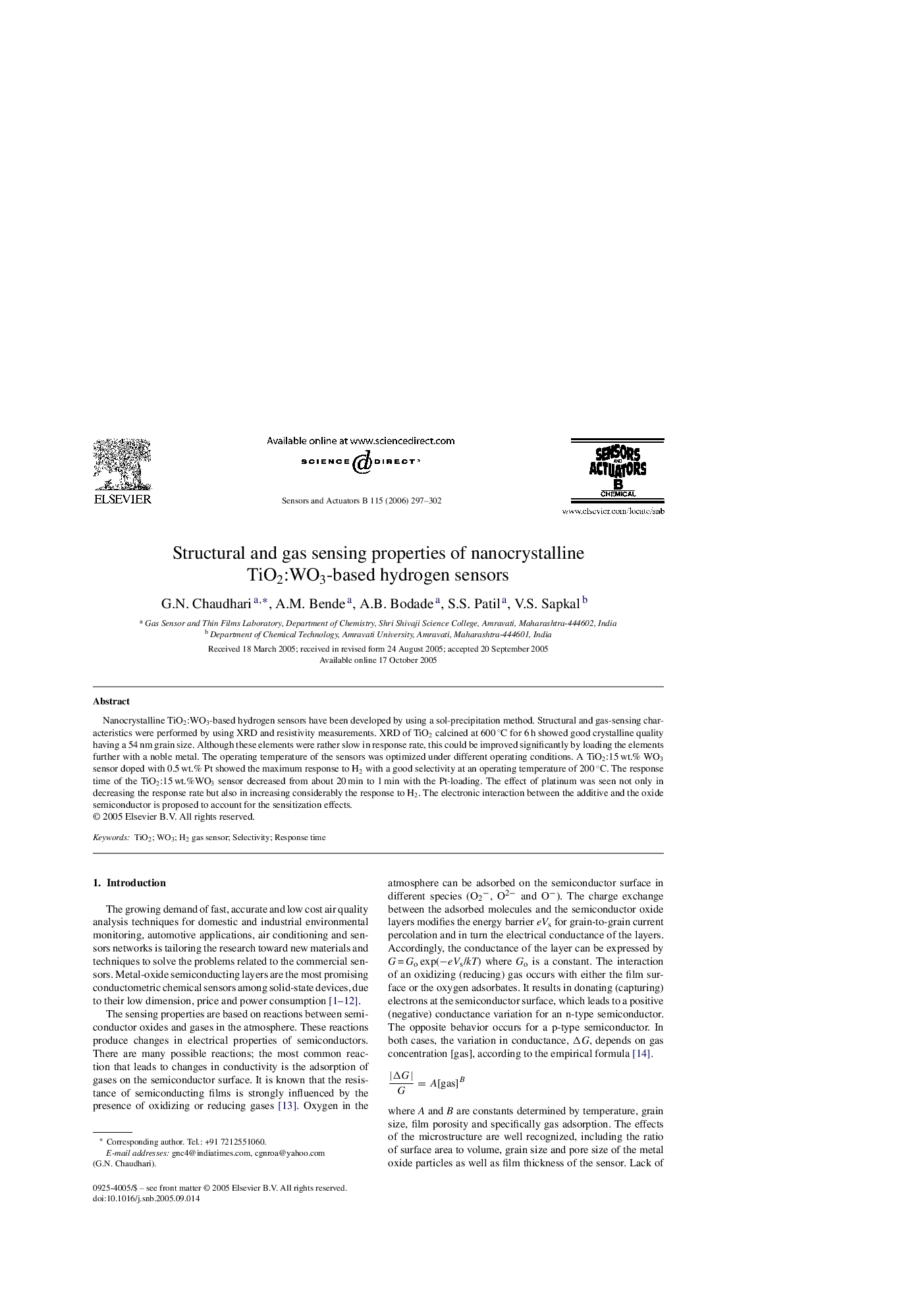| Article ID | Journal | Published Year | Pages | File Type |
|---|---|---|---|---|
| 747287 | Sensors and Actuators B: Chemical | 2006 | 6 Pages |
Nanocrystalline TiO2:WO3-based hydrogen sensors have been developed by using a sol-precipitation method. Structural and gas-sensing characteristics were performed by using XRD and resistivity measurements. XRD of TiO2 calcined at 600 °C for 6 h showed good crystalline quality having a 54 nm grain size. Although these elements were rather slow in response rate, this could be improved significantly by loading the elements further with a noble metal. The operating temperature of the sensors was optimized under different operating conditions. A TiO2:15 wt.% WO3 sensor doped with 0.5 wt.% Pt showed the maximum response to H2 with a good selectivity at an operating temperature of 200 °C. The response time of the TiO2:15 wt.%WO3 sensor decreased from about 20 min to 1 min with the Pt-loading. The effect of platinum was seen not only in decreasing the response rate but also in increasing considerably the response to H2. The electronic interaction between the additive and the oxide semiconductor is proposed to account for the sensitization effects.
